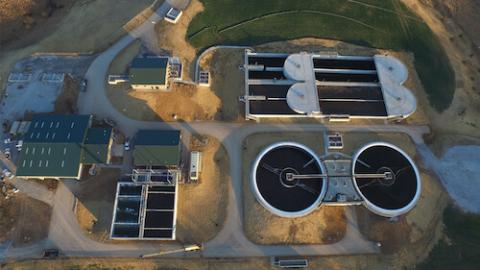Phosphorus recovery by BioDryer and P-Series pyrolysis from sewage sludge and organic waste
The company Bioforcetech aims to reduce energy and labour costs while reducing emissions and generating by-products (fertilisers) with an added value. The company's vision is simple: instead of transporting "waste", machines are designed to autonomously transform organics into value. Bioforcetech's technology locally transforms organic streams into renewable energy and biochar.
The process developed by Bioforcetech fits into the sludge treatment chain with two distinct machines and their respective processes: the Biodryer with biodrying and the P-series pyrolysis. The two technologies can be installed independently, but the combination of the two processes guarantees an overall treatment with a zero energy cost net of the budget.
The Biodryer uses the bacteria present in the sludge to produce heat, with about 75% reduction in volume, thus reducing the transport effort needed to dispose of the sludge to about ¼, with a proportional reduction in pollution. Pyrolysis is a decomposition of organic material through the application of heat, from 350°C to 900°C, without adding oxygen, from which two co-products are obtained: synthesis gas and biochar.
The synthesis gas is combusted to obtain hot water that can be used to power the drying process, thus making both processes self-sustainable. Biochar is what remains of the solid component of sludge, a compound rich in segregated carbon and free of pollutants and pathogens that can be used in a wide variety of areas. In addition to wastewater sludge, biochar can also be used to treat sludge from breweries, dairies, etc.
- With the treatment of - say - 7 000 tons per year, 400 trips by truck have been avoided, the sludge has been reduced to 560 tons/year and transformed into biochar, with a 90 % recovery of the phosphorus inside.
- The product can also be used in agriculture and other sectors, thus avoiding CO2 emissions into the environment.
- A calculator showing Biochar production, reduced number of truck trips and potential revenues is available on the website.

